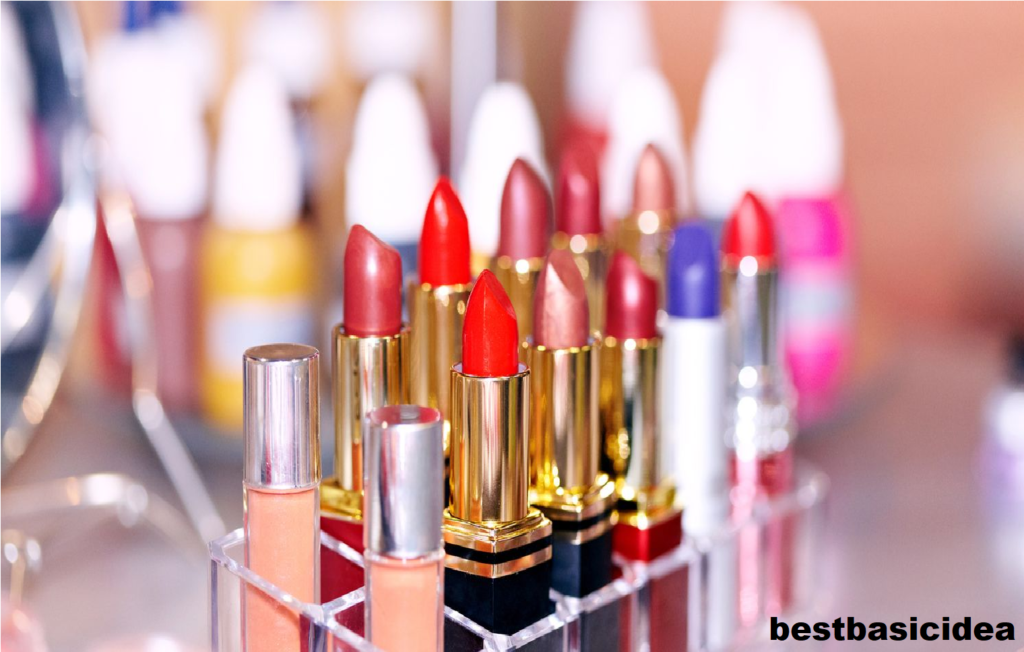Introduction:

Selecting the right lipstick shade can transform your look and boost your confidence. With countless options available, it can be overwhelming to find the perfect match. This guide will help you navigate through the various factors to consider when choosing a lipstick shade that complements your unique features and preferences.
Understanding Your Skin Tone
One of the most critical aspects of finding the perfect lipstick shade is understanding your skin tone. Skin tones are generally categorized into three main types: fair, medium, and deep. Additionally, recognizing your skin’s undertone can further refine your selection.
- Fair Skin: People with fair skin often have pink or peach undertones. Shades that work well include:
- Light pinks
- Peachy nudes
- Soft corals
- Berry tones
- Medium Skin: Medium skin tones usually have neutral or olive undertones. Suitable shades include:
- Rose
- Mauve
- Deep pink
- Warm reds and oranges
- Deep Skin: Deep skin tones often have blue or purple undertones. Shades that complement this skin tone include:
- Rich plums
- Deep reds
- Berry hues
- Warm browns
Identifying Your Undertone
Your skin’s undertone can be cool, warm, or neutral, and it plays a significant role in determining which lipstick shades will look best on you.
- Cool Undertones: If you have cool undertones, your skin will have hints of pink, red, or blue. Suitable lipstick shades include:
- Blue-based reds
- Pink hues
- Berry colors
- Mauves
- Warm Undertones: Warm undertones are characterized by yellow, golden, or peachy hues. Ideal lipstick shades include:
- Orange-based reds
- Coral shades
- Peach tones
- Warm nudes
- Neutral Undertones: Neutral undertones have a balance of both cool and warm hues. People with neutral undertones can pull off a wide range of colors, including:
- Nude shades
- Pink hues
- Red tones
- Berry colors
Considering the Occasion
The occasion or setting in which you plan to wear the lipstick can also influence your choice. Different shades can be more appropriate for various settings.
- Everyday Wear: For a natural look suitable for work or casual outings, consider:
- Nude shades
- Light pinks
- Soft corals
- Evening Events: For more formal or evening occasions, opt for bolder, more dramatic shades:
- Deep reds
- Plums
- Bright berries
- Special Occasions: For weddings, parties, or other special events, you might want to experiment with:
- Bright reds
- Bold purples
- Metallic shades
Matching Your Lipstick to Your Outfit
Coordinating your lipstick with your outfit can create a harmonious look. Here are some tips:
- Complementary Colors: Choose lipstick shades that complement the colors of your clothing. For example, a red dress pairs well with a classic red lipstick, while a navy outfit looks great with berry tones.
- Contrasting Colors: Sometimes, contrasting colors can create a striking effect. A bold red lipstick can pop against a white or black outfit.
- Neutral Clothing: If your outfit is neutral, like black, white, or beige, you have more freedom to experiment with bright or bold lipstick colors.
Testing Lipstick Shades
Testing lipstick shades before making a purchase is essential to ensure they look good on you.
- Swatch Test: Apply a small amount of the lipstick on the back of your hand or on your wrist to see how the color appears against your skin tone.
- Virtual Try-On: Many beauty brands offer virtual try-on tools on their websites, allowing you to see how different shades look on your lips using your photo or a live camera.
- In-Store Testing: If possible, visit a store and test the lipstick shades in person. Apply the lipstick to your lips to see how it looks in natural light.
Considering Your Lip Shape
Your lip shape can also influence which lipstick shades will look best on you.
- Thin Lips: To make thin lips appear fuller, opt for lighter shades and add a touch of gloss. Avoid dark colors, which can make lips look smaller.
- Full Lips: Full lips can pull off a wide range of shades. If you want to tone down the fullness, choose matte shades in deeper colors
Conclusion
Choosing the perfect lipstick shade involves understanding your skin tone and undertone, considering the occasion, matching it to your outfit, and testing the shades before purchasing. By keeping these factors in mind, you can find a lipstick that enhances your natural beauty and suits your personal style. Remember, makeup is a form of self-expression, so don’t be afraid to experiment with different shades and finishes to find what makes you feel confident and beautiful.
